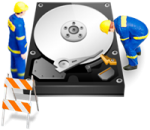
Recovering CHKDSK Deleted Files on Windows 10/11
Running the CHKDSK command on Windows 10/11 can sometimes lead to data loss, especially if the drive is highly fragmented. This guide provides essential information on how to recover files deleted by CHKDSK. It explains that CHKDSK can delete files during its repair operations, particularly when it encounters bad sectors and fails to recover or remap the data. The guide emphasizes the importance of stopping the use of the affected drive immediately to increase the chances of successful data recovery.
Understanding PMR and SMR Hard Disk Drives
The article discusses two important technologies for data storage in hard disk drives: Perpendicular Magnetic Recording (PMR) and Shingled Magnetic Recording (SMR). It explains that areal density, or the number of bits that can be stored per square inch, is a critical factor for HDD manufacturers. SMR technology allows for higher areal density and thus greater storage capacity compared to traditional PMR. The article provides an overview of these technologies and highlights their key differences.
How to Detect Fake Flash Drives
The article discusses the prevalence of counterfeit USB flash drives that falsely advertise large storage capacities at very low prices. These fake drives appear to have the advertised capacity when connected to a computer, but their actual usable storage is much smaller. The article aims to educate readers on how to detect these counterfeit drives, the risks associated with using them, and introduces tools like Validrive that can help verify the true storage capacity of flash drives.
Understanding Overwriting: Principles, Methods, and Implications
The article discusses the concept of overwriting in data management, emphasizing its importance in data security and recovery. Overwriting involves replacing existing data with new data in the same storage location, rendering the original data inaccessible. The article also touches on the deletion process in Windows, explaining that deleting a file typically moves it to the Recycle Bin rather than permanently removing it from the hard drive.
How to Retrieve Deleted Audio Files: A Comprehensive Guide
Learn how to retrieve deleted audio files effortlessly with our comprehensive guide, covering built-in tools and third-party software for Windows, MacOS, Android, and iOS. Follow step-by-step instructions to recover your lost audio files and prevent future data loss.
Understanding the Contents of C:\$RECYCLE.BIN on Windows 10/11
The C:\$RECYCLE.BIN directory on Windows 10/11 serves as the master recycle bin for the operating system, containing subfolders that correspond to the recycle bins of individual user profiles, identified by their Security Identifiers (SIDs). These subdirectories exhibit peculiar behaviors when permissions or attributes are altered, temporarily changing their appearance but eventually reverting to their original state.
How to Recover Files Permanently Deleted from Recycle Bin
Discover how to recover files permanently deleted from the Recycle Bin using built-in Windows tools like Previous Versions and the Command Prompt. If these methods fail, learn about using Renee Undeleter to get your files back. Read our guide for detailed steps and solutions.
Recover Deleted Files with Windows File Recovery (WinFR)
Windows File Recovery is a free command-line utility from Microsoft designed to help users recover accidentally deleted files. Available for download from the Microsoft Store on Windows 10 and Windows 11, it supports the recovery of files from various storage devices, including local SSD drives, USB sticks, memory cards, external hard drives, and ZIP drives. While it lacks a graphical user interface, those familiar with command-line tools will find it easier to use.
How Can You Recover Temporary Deleted Files on a Computer Effectively
Learn how you can recover temporary deleted files on a computer using built-in OS tools, professional recovery software, and backups. This article offers step-by-step instructions and practical tips to effectively restore your lost files, ensuring you can retrieve them quickly and easily.
Understanding the LOST.DIR Folder in SD Cards: Basic Info and Solutions
Discover the mysteries behind the LOST.DIR folder on your SD card, why it appears, and how to manage it. Learn effective methods to recover important files and improve your device’s performance.




